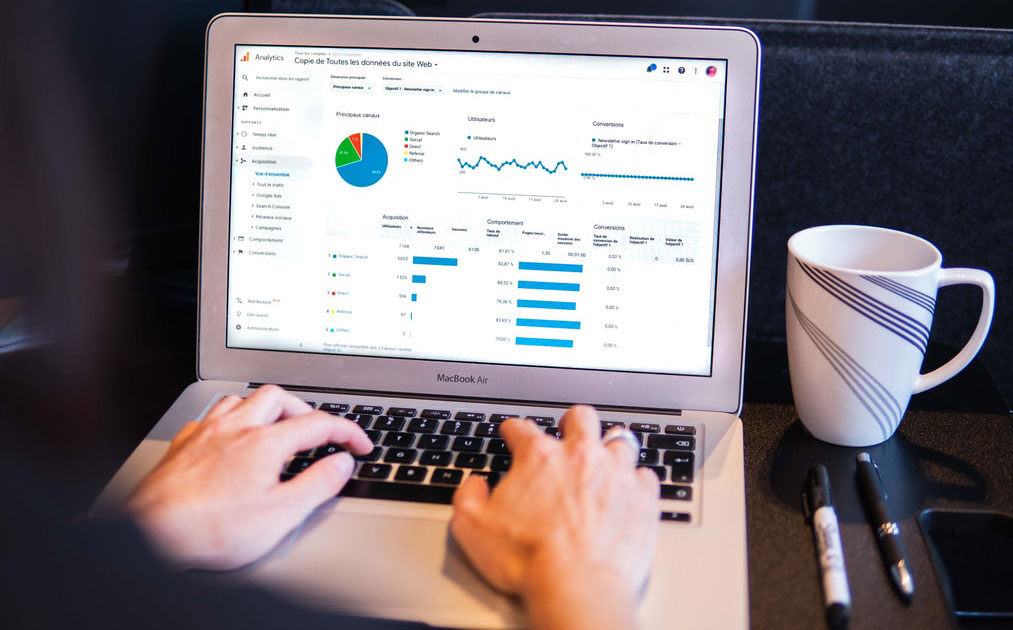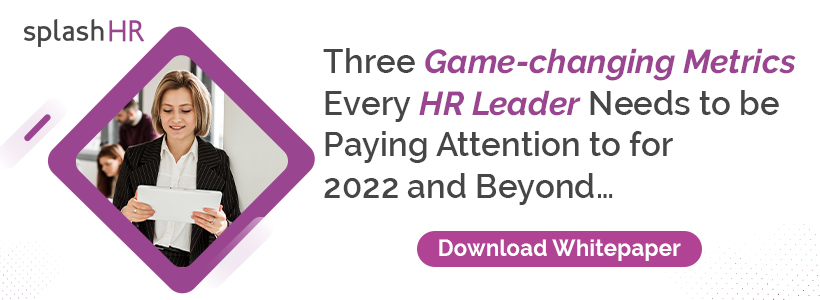A growing method of ensuring that the business is generating optimal business outcomes is to have a 360-degree view of both business and people information. Having access to data in real-time improves transparency of what is happening within the organisation and helps business leaders make informed decisions about their people as and when they require.
What is People Analytics?
People Analytics is a process in which the company’s data is transformed into insights. People analytics, also known as HR or talent analytics, uses analysis to help decision-makers interpret business and people data to improve the impact on business goals – and assess human resources initiatives’ effectiveness.
Over the years, HR Analytics has become mainstream, and more organizations understand the efficiency of people analytics trends.
Data analysis has taken over all the channels. It has evolved beyond recognition. Data has transitioned from providing analysis from the given data or its insights to prescriptive and predictive analysis with Machine Learning and Artificial Intelligence.
Data science has changed the face of talent analytics and its integral parts. It has drastically changed the way organizations are managing performance, streamlining financial services, talent management, engagement activities, and overall workforce management.
8 Critical Things About People Analytics You Need to Know!
1. Employee Experience is Everything
HR is usually considered an intuitive function. Implementing analytics and employee experience tracking tools was once a job for IT. However, today, HR professionals have advanced technology to align their decisions to workforce trends and enhance HR processes. People analytics is all about enabling data-driven employee management and analyzing the correlation between engagement and retention. The use of people analytics in HR would allow organizations to create extremely targeted and personalized employee experiences.
2. Relying on Data to Understand the Workforce Better
3. People Analytics keeps Evolving
Data analytics entered the realm of HR a little late. There has been a debate on how HR analytics can harness workforce efficiencies. Whether it can measure an HR activity’s success, engagement programs, or productivity, it has become more prevalent. People analytics trends are expanding, and companies are getting more educated on changing employee retention processes, employee experiences, productivity, and overall employee satisfaction.
4. Embracing advanced people analytics
Everything new is confusing, with the advancements in data science and analytics. Predictive analytics is responsible for developing many incredible models that help solve complex HR challenges and tasks.
The issue is to understand how to apply the models and utilize them. For this level of streamlining to work out, data accuracy and updating is mandatory. HR professionals need to change their guidelines and use real data to make strategic decisions. The correct data model needs efficient data and efficient users.
5. HR analytics extends beyond the HR teams.
People Analytics is a core group and not just an HR activity. With data interpretation, reporting, people analytics dashboards, visualization, statistics, etc., businesses not only gain data insights but pass it over. Every user can perform their analysis locally and gain insights from the dashboards and reports. It extends from HR teams, employees, IT teams, and business partners for sharing data.
6. The Best Approach is to Be Open-Minded
People analytics is not just a regular HR management system used to track attendance, analyze payroll, or submit timesheets. Today’s digital world lets employees walk around with GPS on their devices, cameras, and the amount of data utilized or viewed is unimaginable. With vast amounts of data, companies are becoming more reliant on analytics to keep them on track. It becomes crucial to have a better analytics model or solution at your disposal.
7. Data Security & Privacy
Data security is the challenge of the entire world at this hour. From credit card scams to security breaches, each data security incident is a wake-up call to take the digital revolution more seriously and responsibly. Identity protection and data security is a critical issue. People analytics teams should manage and secure data carefully without causing any compliance issues or breaching trust.
8. Value Profiling
Successful people process decisions are critical for delivering desired business outcomes. Value profiling recognizes those people processes most important for delivering desired business outcomes in your organization but are least efficiently implemented.
It enables organizations to rectify such processes, which in turn enables them to achieve desired business outcomes.
Why is People Analytics important for HR?
People Analytics is around for a decade, and big companies are recently adapting to it.
More than 70% of companies are investing in people analytics and integrating data for better business outcomes.
People analytics is drastically improving HR functions and providing deeper insights for strengthening and streamlining the workforce structure.
Advanced people analytics and people analytics dashboards help organizations improve their transactional HR processes and planning processes. The other benefits include:
- Reduction in workforce planning cycles
- Improved hiring processes, accuracy in data and management
- Better retention
- Employee satisfaction
- Efficient talent management, skill management, sales management, etc.
- Improved productivity and increased accuracy in headcount planning
SplashBI for HR to the Rescue
SplashBI for HR offers an intuitive platform with over 500+ pre-defined people KPIs across various dashboards. With SplashBI for HR, get outcomes quicker and make informed decisions. SplashBI for HR’s automatic data connectors can bring in data from several source systems, ranging from ERP systems, various databases to pretty much any cloud application. There is no need to fret about field mappings and data transformation.
Future of People Analytics
There are endless benefits and possibilities of people analytics. Data science will take over technology in the coming times; with trends like AI and machine learning, businesses will integrate automation and advanced people analytics to accelerate business processes.
From identifying the best talent, a seamless hiring process, lesser room for errors, analytics will remove the gaps in processes. There will be a leap in the way organizations will perceive and comprehend data insights to make intelligent and strategic business decisions.
Conclusion
There is an urgency involved in preparing for the future. Companies that embrace analytics and recognize its benefits will stay at the forefront of the competition. The decisive advantages of people analytics and interactive data visualization will change the organizational structure to a data-driven culture.
SplashBI offers an intuitive platform with over 500+ pre-defined people KPIs across various dashboards. With SplashBI, get outcomes quicker and make informed decisions. SplashBI for HR’s automatic data connectors can bring in data from several source systems, ranging from ERP systems, various databases to pretty much any cloud application. There is no need to fret about field mappings and data transformation.














